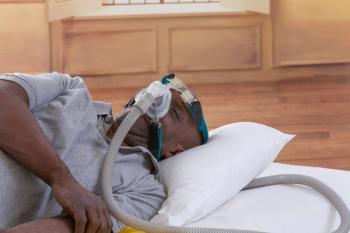
Cataract Surgery in Children Commonly Led to Glaucoma-Related Adverse Events
The Pediatric Eye Disease Investigator Group collected data on children who had lensectomy prior to age 13 years in a 5-year span.
Cataract surgery led to
The Pediatric Eye Disease Investigator Group collected data on children who had lensectomy prior to age 13 years in a 5-year span. This study assessed the 5-year cumulative incidence for glaucoma-related AEs that were associated with risk of glaucoma-related AEs within 5 years of a cataract surgery.
The study was designed as a clinical research registry, and medical record review at enrollment was used to collect medical and ophthalmic data. Both eyes were included if a lensectomy was performed on both eligible eyes. Children who were 12 years or younger and had a lensectomy in the previous 45 days between June 2012 and July 2015 were enrolled in the registry.
All participants were identified as having a unilateral or bilateral lensectomy. Glaucoma was defined as having an intraocular pressure (IOP) that was greater than 21 mm Hg and having one of the following: abnormal corneal enlargement, increased optic nerve cupping, use of medication to reduce IOP, or glaucoma surgery. Glaucoma suspect was defined as a participant having an IOP greater than 21 mm Hg, "in the absence of a criterion for glaucoma," the study investigators noted.
There were 810 children and 1049 eyes that were included in this study. There were 443 eyes (55% female; mean [SD] age, 0.89 [1.97] years) that were aphakic after lensectomy and 606 eyes (47% female; mean age, 5.65 [3.32] years) that were pseudophakic. The median age at first lens surgery was 0.21 (range, 0.04-12.40) years in aphakic eyes and 5.32 (range, 0.13-12.98) years in pseudophakic eyes.
Seventy-four percent of aphakic eyes were from children who were younger than 6 months when they had their lensectomy. Anterior segment abnormalities were reported twice as often in children with aphakia vs pseudophakia (14% vs 7%). Nearly every aphakic eye had anterior vitrectomy at the lens surgery vs pseudophakic eyes (97% vs 59%).
Glaucoma-related AEs incidence rate in a 5-year period was 29% (95% CI, 25%-35%) in 443 eyes with aphakia and 7% (95% CI, 5%-9%) in 606 eyes with pseudophakia. There were 7% of aphakic eyes and 3% of pseudophakic eyes that were glaucoma suspect; 11% of children with glaucoma-related AEs after bilateral surgery had AEs in 1 eye and 77% had reported AEs in both.
Children younger than 3 months had a higher risk of glaucoma-related AEs within 5 years (adjusted HR [aHR], 2.88; 99% CI, 1.57-5.23), abnormal anterior segment (aHR, 2.8; 99% CI, 1.56-5.30), intraoperative complications at time of lensectomy (aHR, 2.25; 99% CI, 1.04-4.87), and bilaterality (aHR, 1.88; 99% CI, 1.02-3.48).
Infants younger than 6 weeks at lensectomy had the highest rates of glaucoma-related AEs (44%; 95% CI, 35%-53%), and infants 6 weeks to less than 3 months had the next highest (35%, 95% CI, 28%-44%). Fewer children with pseudophakic eyes developed a glaucoma-related AE within 5 years (5%).
A lack of overlap in age between the cohorts, the definition of glaucoma used in this study being different than the Childhood Glaucoma Consensus and other studies, and a substantial loss of completion for a full 5 years of follow-up were cited as limitations on generalizability of these study findings
The researchers concluded that aphakic eyes more commonly had glaucoma-related AEs within 5 years of lensectomy, with children younger than 3 months having an elevated risk of glaucoma-related AEs.
Reference
Bothun ED, Repka MX, Kraker RT, et al. Incidence of glaucoma-related adverse events in the first 5 years after pediatric lensectomy. JAMA Ophthalmol. Published online February 16, 2023. doi:10.1001/jamaophthalmol.2022.6413
Newsletter
Stay ahead of policy, cost, and value—subscribe to AJMC for expert insights at the intersection of clinical care and health economics.













































